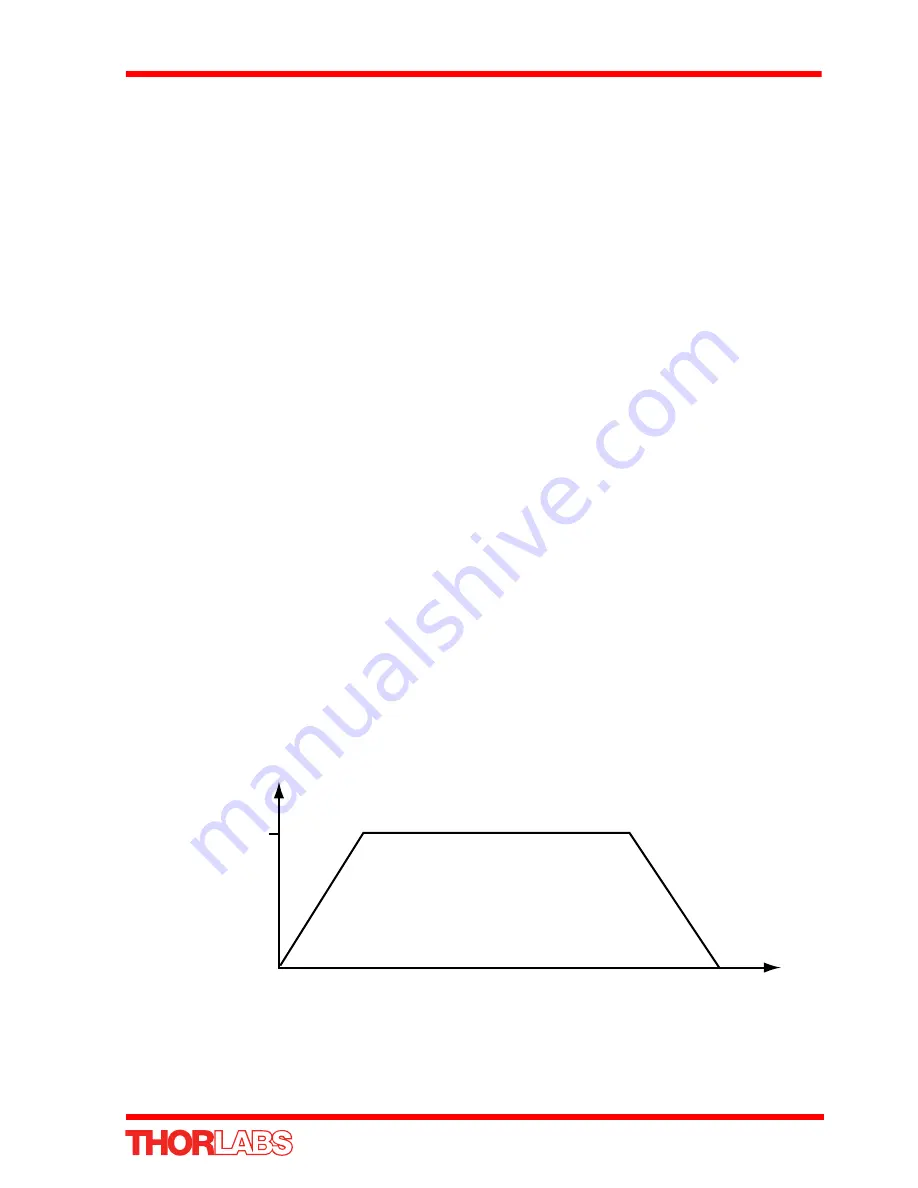
59
DC Servo Motor Driver
Both forces are of equal magnitude. At 180°, the same phenomenon occurs, but
segment A-B is forced down and C-D is forced up. In the 90° and 270° positions, the
brushes are not in contact with the voltage source and no force is produced. In these
two positions, the rotational kinetic energy of the motor keeps it spinning until the
brushes regain contact. In reality, dc motors have several such coils, wound onto an
armature, which produces a more even torque. The magnetic field is provided by an
electromagnet.
E.1.2 Positive and Negative Moves
Positive
and
negative
are used to describe the direction of a move. A positive move
means a move from a smaller absolute position to a larger one, a negative move
means the opposite.
In the case of a linear actuator, a positive move takes the platform of the stage further
away from the motor.
In a rotational stage, a positive move turns the platform clockwise when viewed from
above.
E.1.3 Velocity Profiles
To prevent the motor from stalling, it must be ramped up gradually to its maximum
velocity. Certain limits to velocity and acceleration result from the torque and speed
limits of the motor, and the inertia and friction of the parts it drives.
The motion employed is described by a trapezoidal velocity profile, reflecting the
shape of the velocity
vs.
time graph (see Fig. E.2.), thereby driving the stage to its
destination as quickly as possible, without causing it to stall or lose steps.
The stage is ramped at acceleration ‘
a’
to a maximum velocity ‘
v’
. As the destination
is approached, the stage is decelerated at ‘
a’
so that the final position is approached
slowly in a controlled manner
.
Fig. E.2 Graph of a trapezoidal velocity profile
velocity
maximum
velocity (v)
time
acceleration (slope) a
Содержание TDC001
Страница 1: ...TDC001 DC Servo Motor Driver User Guide ...
Страница 66: ...Appendix F 66 HA0142T Rev 12 February 2011 ...









































